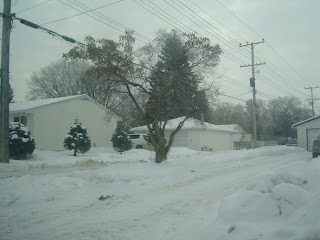Supposedly Paraty sprung into existence thanks to the gold trade. Gold from Minas Gerais, inland, needed to get to Rio de Janeiro. The only way to get it there was over the Serra do Mar (a 1,500 km long system of mountain ranges and escarpments). The only place you can scale the mountains easily enough to cart big sacks of gold is near Paraty. Passing the waterfalls and little villages cramped against the mountains, it’s easy to imagine Portuguese settlers (and their slaves) labouring over the mountains for the good of the empire. Sending me deeper into imaginationland were the guidebook's hints of piracy. Where there was gold, there were pirates and local legend has it that one of Paraty’s churches, Igreja Matriz da Nossa Senhora dos Remédios, was funded by a discovery of hidden pirate gold. People in the town still talk about finding hidden pirate treasure today. We didn't find any despite looking out for big Xs on the ground the whole time we were there.
We arrived in the early afternoon and fortunately it stopped raining long enough for us to find a hotel. It was a beautiful, old manor on the edge of the town’s central square. Our hotel had a view of the pirate church through lush fruit trees and a horse pulling. . . something.
Some strange tidal movements. (It does this every full moon high tide. I’m not entirely clear why the city was designed to let sea water run through it once a month but there it is. Are we lucky to have witnessed it? I suppose, but it was a pain trying to find a dry way back to the hotel.)
An overgrown fort once used to protect Paraty from piracy.
Some hammocks in one of the many tourist shops.
And discovered some very unusual plants in the garden at breakfast on our first morning. Never got round to looking them up but I’ve never seen anything like them anywhere else I’ve been (except for a few other places in Brazil).
We arrived in the early afternoon and fortunately it stopped raining long enough for us to find a hotel. It was a beautiful, old manor on the edge of the town’s central square. Our hotel had a view of the pirate church through lush fruit trees and a horse pulling. . . something.
The streets are all rough cobblestones and the city centre is closed to traffic (hence the horse-powered golf cart) so it’s a very pleasant place to wander. As long as you steer clear of the pirates. . . My wife bravely followed Captain Sparrow for a few hundred metres.
On our first evening it poured rain so we hit the bar next door and got a bite to eat and a beer or four. We poked around town a bit during the next couple of days. Unfortunately, we really didn’t get great beach weather. Mostly cloudy and a bit rainy but at least Paraty was interesting enough to keep us occupied. We did go looking for a beach well recommended in Lonely Planet but it seemed to have misled us so we just explored a bit on our own.
We found some nice views.
We found some nice views.
Some strange tidal movements. (It does this every full moon high tide. I’m not entirely clear why the city was designed to let sea water run through it once a month but there it is. Are we lucky to have witnessed it? I suppose, but it was a pain trying to find a dry way back to the hotel.)
An overgrown fort once used to protect Paraty from piracy.
Pirate Bay.
Some hammocks in one of the many tourist shops.
Our dinner, which looks like barf but was really good. Mango fish, our first true Brazilian cuisine at a restaurant called Casa do Fuego.
We found a frog in our hotel lobby; I love its amber eyes.
And discovered some very unusual plants in the garden at breakfast on our first morning. Never got round to looking them up but I’ve never seen anything like them anywhere else I’ve been (except for a few other places in Brazil).















